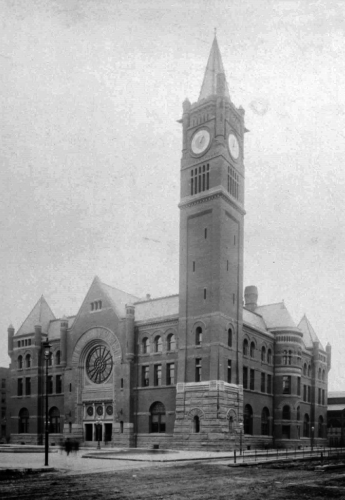I’m not sure why I’m starting my travel-book-travel pattern with this series. It’s just been on my mind lately. I’m watching through all 411 (at this point!) videos from Overly Sarcastic Productions right now, and probably for all of the foreseeable future, and I recently watched Red’s Trope Talks video (a crossover with a channel called Hello Future Me, which I may check out someday if I ever finish OSP) on Dystopias, which I compared to this series as I went.
Then, I finally found the second and third books in the series, which is why I hadn’t included it in my rereading project. No point in trying to reread something that you can’t find.
There was something else, but I can’t remember what it was. It’ll come to me.
It may have been someone saying that JK Rowling didn’t decide she wanted to put Ron and Hermione together until Goblet of Fire, and I said that it was obvious to me since the moment when Ron hoped Hermione would be put in a different house from him, since “I hate you, therefore I’ll love you” is a big thing. This made me think about America and Maxon’s relationship and now I have thoughts about the whole series.
What follows will have spoilers. If you don’t want to know that Maxon is Darth Vader’s son or that America’s been dead since chapter one*, go read the books first and come back. I’ll be here.
When I reviewed The Selection (non-Gratuitous Amazon link!) for the first time, I said that the dystopia is based on a not-very-likely sequence of events. Basically, China calls in the United States’s debts and the US can’t pay them, so China ends up owning the United States. A man named Gregory Illéa (is that a real last name? All that comes up when I search for it is this series) leads a rebellion against China and wins the freedom of what used to be the US, along with Mexico and at least part of Central America.
This is a problem because China was at the time The Selection was written the largest part of the US’s *foreign* debt. Currently, the largest foreign holder of debt is Japan. Either way, though, they hold less than 20% of our total foreign debt, but most of our debt is in Social Security and pension plans, and the amount of foreign debt we hold looks to me to be about equal to how much we owe banks.
What I’m saying is that if China called in its debt, there are a lot of other governments, banks, etc., who would be there to lend us the money to pay China back. Uncomfortable, maybe, but hardly enough to sink us.
Anyway, they rename the country Illéa after Gregory and Gregory, as King, decides to stratify the country into eight castes, starting with the royal family as One and the homeless as Eight.
Our heroine, America, is a Five, which is the caste of artists and musicians. Art and musical superstars, however, are Twos and music producers are Threes and the engineers who operate the recording equipment are . . . Sixes, I think. Cass indulges in some “Makers” and “Takers” stuff here. After all, without the Madonnas and Eminems**, the recording engineers and backup singers and session musicians and such would be out of work.
Like she literally says that. Well, not Madonna and Eminem, but that the Twos are supporting everyone beneath them with their star power. And that’s not how it works. The Twos are supported by everyone beneath them at least as much. If there were no session musicians, backup singers, recording technicians, etc., the Twos would have no way to reach their audience and their careers would end.
Argh.
I also wasn’t sure for a very long time where everything in Illéa is. I actually wrote to Cass asking for a map. We finally do get the map in one of the sequels.
Now. On to the plot.
Our heroine, America Singer, is, as I said before, a Five. She has been having a clandestine romance with a Six, Aspen Leger and, as a woman between 16 and 20, she is invited to apply for The Selection, the process by which the heir to the throne of Illéa chooses a wife. One woman is chosen from each of the 35 provinces to compete.
Aspen wants her to apply and eventually they break up. America’s mother bribes America to enter and she is eventually chosen to represent her district. She travels to the capital of Illéa, Angeles, and there she makes both friends and enemies among the other women of the Selection.
There are all sorts of rules for the Selection, including that they are basically Maxon’s property during The Selection. They cannot refuse Prince Maxon anything he asks for, and they are not allowed any other relationships.
This becomes a major stumbling block when Aspen returns, having been chosen to become a palace guard. Aspen wants to rekindle their relationship and she still loves him, so they sneak around fooling around for a while, but thanks to plot armor, no one ever catches them.
Of course, we can’t follow 35 women for a long time, so the number whittles down pretty quickly. Maxon sends a bunch home the first night, others choose to go home. There is a subplot about two rebel groups, one from the north and one from the south. One rebel group attacks the palace, leading Maxon to prune down the final group to just the six he likes best, rather than the traditional ten.
All throughout this, America has been honest with Maxon that she loves someone else, which at first allows Maxon to relax more around her, since she doesn’t really want to marry him. And since he’s relaxed, she’s more relaxed and they really do start to fall in love.
Maxon is pretty devoted just to America (who is still being pursued by Aspen) and thinks that if she doesn’t marry Maxon, she’ll just marry Aspen and still end up being a Two, since the wife’s caste matches the husband’s caste and palace guards are Twos. That was really offputting for me. I’ll reread the books and elaborate later.
America also has trouble reading a room and makes some faux pas’es (fauxes pas? WTF?) and she actively makes an enemy of the King, Clarkson.
Overall, though, I really enjoyed the series. The characterizations were good, the dialogue was great, America also has a few minutes that made me want to pull my hairs out (like the abovementioned “Aspen will be an acceptable consolation prize” scene), but really those served to make America a more interesting character.
In a way, I stuck this series out not to see whom Maxon would choose (I mean, it’s America’s series — who else would he choose?), but to see whom I wanted him to choose. The first runner up, Kriss, would also have been a great match for Maxon. I did end up shipping Maxon with America, but Maxon/Kriss was very, very close.
*No she hasn’t. It’s just the plot twist that came to mind first.
**According to Wikipedia, they are the highest-earning musicians who are (a) still alive and (b) American citizens.


